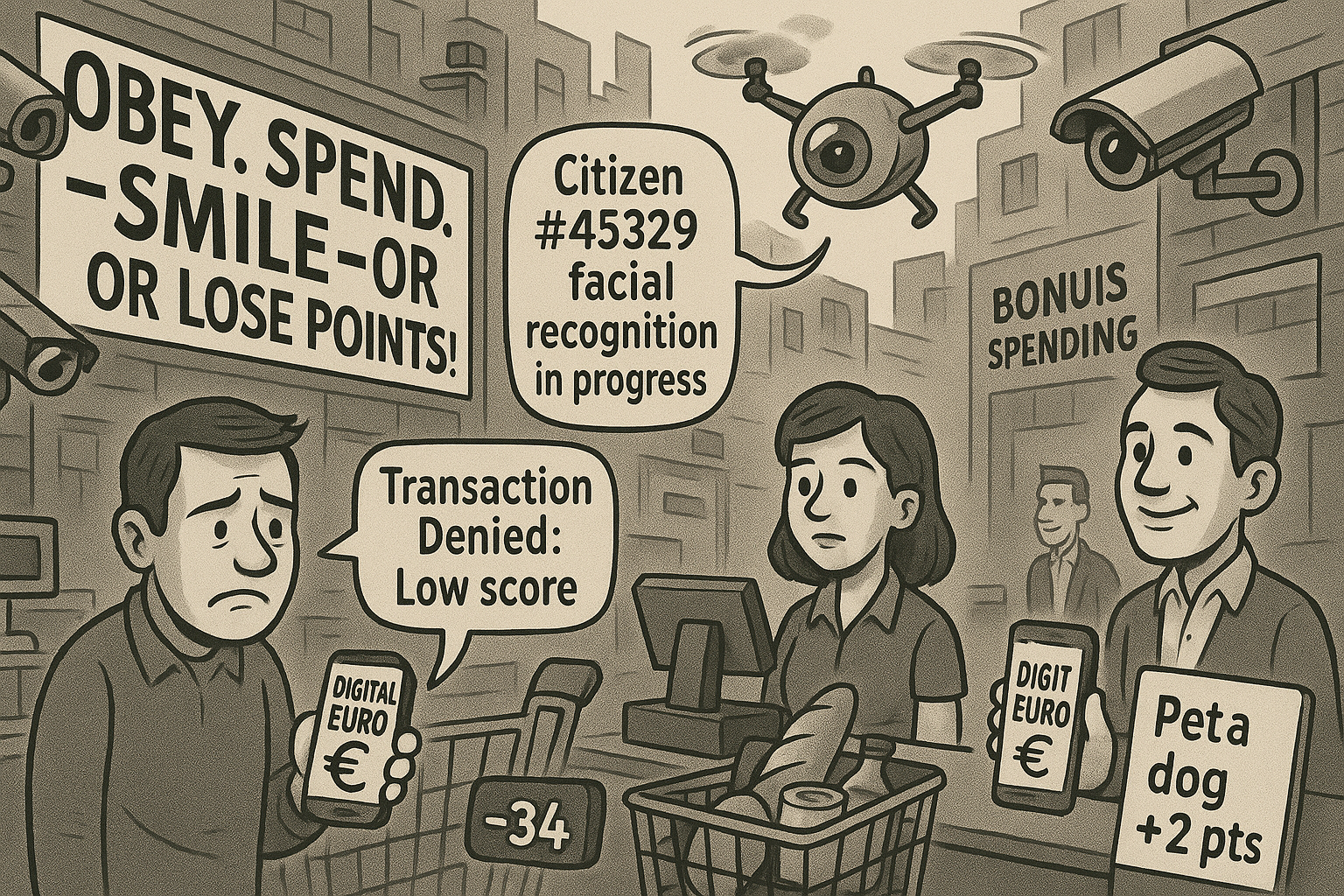
Digital Euro or Control?
As the world accelerates toward a cashless future, a deeper conversation is quietly brewing beneath the surface: Are we building systems of convenience or tools of control?
From the digital euro to mass surveillance tech and Bitcoin’s uncertain role, the years before, during, and after the COVID-19 pandemic have marked a turning point in the global digital and financial landscape.
Before COVID: The Infrastructure Was Already Taking Shape
Even before 2020, a shift toward centralized digital infrastructure was in motion:
Central banks were researching digital currencies to modernize payment systems.
Countries like China had already begun piloting a digital yuan, integrated with surveillance mechanisms.
5G networks were being rolled out, providing the bandwidth needed for real-time data transfer — essential for high-resolution surveillance, smart cities, and mass facial recognition systems.
Facial recognition was being deployed in airports, public squares, and even shopping centers in countries like the US, China, and parts of Europe.
The pandemic didn’t create these tools — it accelerated their adoption.
During the COVID-19 pandemic (2020–2021): Speed and Silence
Several countries proceeded with satellite launches, advancing their space programs despite global lockdowns. These activities included both civilian and military satellites, contributing to various applications such as communication, Earth observation, and surveillance.As countries entered lockdown, new technologies were quietly normalized:
Surveillance cameras were upgraded or installed in many cities under the banner of “public health and safety.”
Contact tracing apps tracked individual movements with Bluetooth, GPS, and QR code systems.
5G-powered smart cameras with facial recognition were deployed to detect mask compliance, quarantine violations, and crowd density.
Meanwhile, satellite launches continued uninterrupted. Countries including:
These satellites improved global surveillance, geolocation, and digital communication infrastructure — many of which are dual-use for both civilian and defense purposes.
Countries that launched satellites during the pandemic include:
United States: Continued satellite launches through NASA and private companies like SpaceX, including missions for Earth observation and communication.
China: Launched satellites such as Xingyun-2 01 and 02 in May 2020 to test space-based Internet of Things (IoT) communications technology.Testbook
Russia: Conducted multiple launches, including deploying 34 OneWeb satellites in March 2020 to expand global internet coverage.TASS+1Copernical+1
India: Resumed satellite launches after initial pandemic-related delays, focusing on Earth observation and communication satellites.
France: Launched the CSO-2 military reconnaissance satellite in December 2020 and the Syracuse 4A military communications satellite in October 2021, enhancing national defense capabilities.France 24+1Copernical+1
European Union: Through the European Space Agency (ESA), launched the Sentinel-6 Michael Freilich satellite in November 2020 as part of the Copernicus program for Earth observation.Phys.org+2Copernicus+2European Space Agency+2
United Arab Emirates: Launched the Hope Mars Mission in July 2020, marking the Arab world’s first interplanetary mission.Agenzia Nova
Turkey: Launched the Turksat 5A communication satellite in January 2021 to improve national broadcasting and internet services.Agenzia Nova
Saudi Arabia: Announced increased investments in its space program as part of the Vision 2030 reform plan, aiming to develop local satellite production and launch capabilities.Agenzia Nova
Post-COVID: The Rise of the Digital Euro
With much of the digital groundwork laid, the European Central Bank (ECB) has been moving forward with its digital euro project:
2020: ECB releases its first comprehensive report on a potential digital euro.
2021: Launch of the investigation phase.
2023: Preparation phase begins — technical planning, legislative drafts, infrastructure.
2025: A final decision on issuing the digital euro is expected.
The official goals are:
Payment efficiency
Financial inclusion
Digital sovereignty (less reliance on private tech giants)
Future-proofing the eurozone economy
But this raises a set of critical questions:
Will programmable digital money allow or restrict how you spend?
Who decides what transactions are allowed — or blocked?
Can your financial access be influenced by behavior, similar to a social credit score?
Bitcoin: The Digital Euro’s Opponent or Ally?
Unlike the digital euro, Bitcoin was designed as a decentralized, borderless currency, free from control by any government or central bank. Its founding principles:
Scarcity (limited supply)
Freedom from centralized control
Transparency via blockchain
This has made Bitcoin a symbol of financial freedom, especially in countries with high inflation or political repression.
But central banks and governments are watching closely:
Some countries ban or restrict crypto (e.g., China).
Regulatory pressure is increasing in the EU, US, and other regions — especially around KYC/AML rules.
Institutions are entering the space (BlackRock, Fidelity), blurring the line between decentralization and central control.
This prompts a key question: Is Bitcoin a tool for financial freedom — or is it slowly being co-opted?
What’s Next: A Future Worth
Are we moving toward a financial system that rewards conformity?
Will cash — and financial privacy — eventually disappear?
Could a low “social score” mean your payment gets denied?
Is Bitcoin the only exit, or will it be brought under control?
We live in a world where technology offers both liberation and control. Which direction we take depends not only on policy-makers and corporations — but also on whether we, as citizens, stay informed, ask the right questions, and demand transparency.
Happy Easter!
